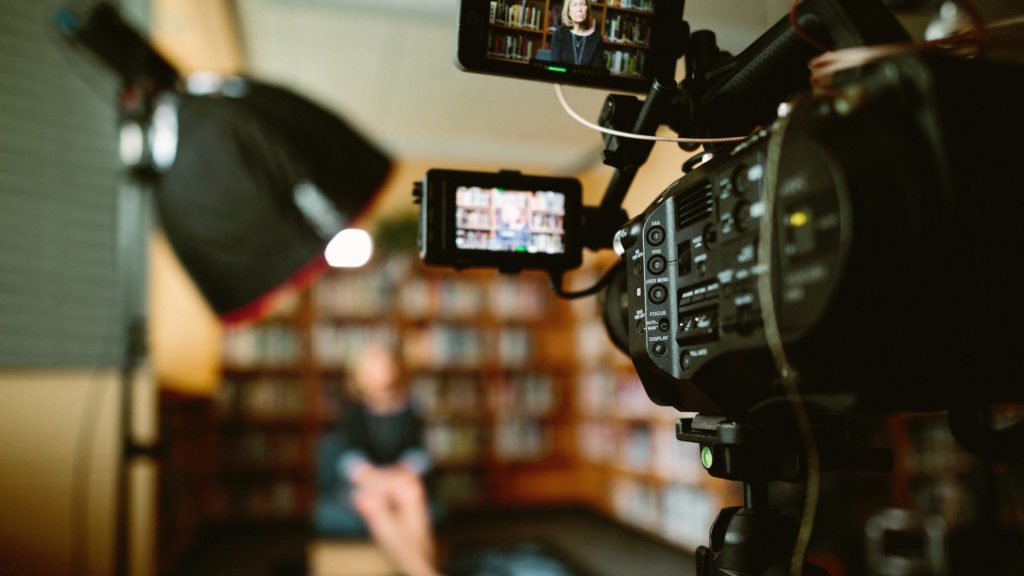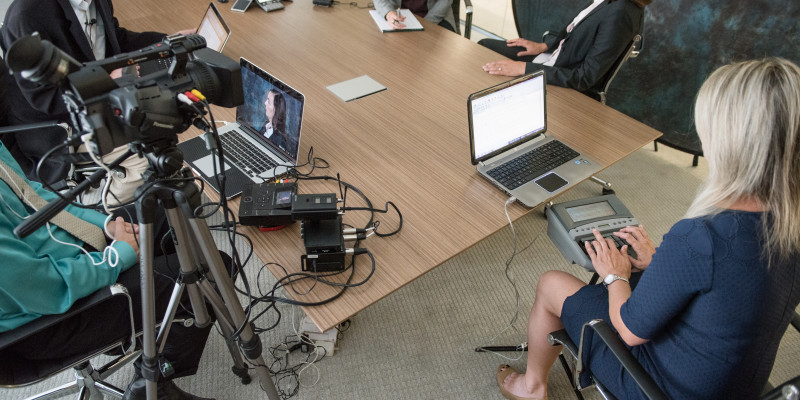How Legal Videography Can Make or Break Your Legal Method
How Legal Videography Can Make or Break Your Legal Method
Blog Article
Looking Into the Systems of Lawful Videography: Unveiling Its Procedure in Shielding Genuine Aesthetic Statement for Judicial Process
In the world of judicial proceedings, the duty of lawful videography stands as a keystone in preserving and providing aesthetic proof. As innovation remains to advance, the systems behind legal videography have actually become increasingly elaborate, supplying a crucial layer of authenticity to testimonies recorded on video clip. By diving into the functional complexities of lawful videography, one can uncover the meticulous procedures that safeguard the integrity of aesthetic evidence offered in court rooms - Legal Videography. This expedition not only drops light on the historical evolution of legal videography but likewise means the future patterns that might even more change exactly how visual testaments are maintained in the world of justice.
Historical Development of Lawful Videography
Taking a look at the historic progression of legal videography exposes a significant change in the recording and presentation of visual evidence within the lawful landscape. In the past, lawful proceedings greatly depended on written transcripts and photos to document events and supply proof. Nonetheless, with the introduction of video innovation, the lawful sector witnessed a paradigm shift in exactly how aesthetic statement was recorded and offered.
The advancement of lawful videography can be mapped back to the late 20th century when advancements in video recording equipment made it more available for use in courtrooms. This technological development not only enhanced the precision and integrity of aesthetic proof however likewise reinvented the method situations were provided to courts and courts (Legal Videography). Lawyers began to recognize the persuasive power of video clip recordings in sharing feelings, nuances, and non-verbal cues that created records or photos alone might not catch effectively

Modern Technology Advancements in Video Clip Documentation
What crucial technical innovations have transformed video paperwork in the legal field? The legal field has seen significant advancements in video clip documents modern technology that have actually improved the authenticity and reliability of aesthetic evidence in judicial procedures. One of the vital innovations is high-def (HD) video recording abilities, which offer crystal-clear photos and sharp details that are critical for properly catching testimonies, facial expressions, and various other visual cues. In addition, the combination of timestamping and metadata features in video clip paperwork tools has actually allowed precise documents of when and where the video was tape-recorded, ensuring the stability of the evidence provided in court.
Furthermore, developments in video clip encryption and watermarking modern technologies have actually boosted the safety and tamper-proof nature of video proof, safeguarding it versus unapproved alterations or meddling. The development of cloud storage space remedies and remote access abilities has streamlined the storage, access, and sharing of video clip evidence, helping with seamless cooperation among legal experts and making certain efficient accessibility to essential visual testimonies when needed. These technological developments in video documents have certainly changed the lawful area, boosting the precision, credibility, and admissibility of visual evidence in judicial process.
Duty of Lawful Videographers in Court Room Setups
The development of video clip documents modern technology in the legal field has actually required an important role for lawful videographers in court settings, making certain the honesty and dependability of aesthetic testaments provided throughout judicial procedures. Legal videographers play a basic function in recording and protecting accurate aesthetic evidence that can be crucial in litigation. Their responsibility encompasses establishing tools, taping proceedings, and creating premium videos that accurately show the events in the courtroom.
In addition, legal videographers typically function closely with lawful groups to make sure that the video proof aligns with the case's demands and can be successfully offered in court to sustain the lawful debates being made. Overall, the role of legal videographers in courtroom settings is essential in maintaining the concepts of justice and making certain the openness of lawful process. Legal Videography.

Ensuring Admissibility and Stability of Video Evidence
To preserve the credibility of visual proof offered in legal procedures, making sure the his comment is here admissibility and honesty of video clip evidence is a vital responsibility for legal videographers. Admissibility refers to the acceptance of evidence by the court, and for video clip proof to be permissible, it should satisfy specific criteria. Lawful videographers play an essential function in guaranteeing that the video clips they capture abide by the guidelines of proof, such as significance, dependability, and credibility.
Honesty of video clip proof entails keeping the creativity and accuracy of the video footage from the time it is tape-recorded until it exists in court. This includes securely saving the video clip data, documenting the chain of protection, and protecting against any kind of meddling or modifications. Legal videographers must adhere to rigorous protocols to assure the honesty of the video clip evidence and avoid any type of challenges to its credibility.
Future Trends in Legal Videography
Offered the boosting reliance on technology in lawful procedures, legal videographers are positioned to accept ingenious developments forming the future of aesthetic statement capture and presentation. One of the prominent trends imminent is the assimilation of digital fact (VIRTUAL REALITY) and increased fact (AR) innovations into legal videography. These modern technologies have the prospective to transform just how visual evidence is offered in courts, permitting courts and courts to immerse themselves in the scene of the crime or occurrence.
Additionally, the usage of expert system (AI) algorithms for video clip analysis is anticipated to enhance the process of reviewing and examining large amounts of video clip footage. AI can assist in recognizing investigate this site essential minutes, anomalies, and patterns within videos, boosting the efficiency of lawful examinations.
Verdict
To conclude, lawful videography has played a crucial function in providing genuine aesthetic proof for judicial process. Via technological advancements and the experience of legal videographers, the honesty and admissibility of video proof are ensured in court setups. As legal videography remains to develop, it will certainly be important to promote standards that preserve the precision and reliability of aesthetic testament for the future of legal procedures.
Examining the historical development of lawful videography reveals a considerable makeover in the capturing and presentation of aesthetic proof within this article the lawful landscape.The evolution of video documents modern technology in the legal field has actually demanded a crucial role for legal videographers in court setups, ensuring the integrity and dependability of aesthetic testaments offered throughout judicial proceedings. Additionally, legal videographers typically function very closely with lawful groups to make certain that the video evidence aligns with the instance's demands and can be properly offered in court to sustain the lawful debates being made.To keep the credibility of visual evidence presented in lawful process, ensuring the admissibility and integrity of video clip proof is an essential duty for lawful videographers. As lawful videography continues to develop, it will be vital to copyright criteria that maintain the precision and reliability of visual testimony for the future of legal process.
Report this page